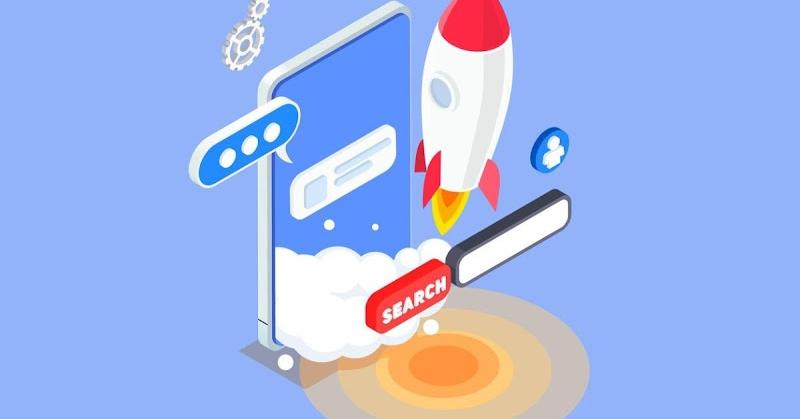With the rise of smartphone use worldwide, more people have access to mobile devices and they rely on them for various tasks, including communication, travel, productivity, and shopping. As smartphone usage continues to increase, so does the demand for mobile apps. From gaming and entertainment to online shopping and mobile payments, smart apps have made things convenient for mobile users. With the high demand for user friendly and innovative mobile apps, app development companies have to stay competitive among the many alternatives available.
To achieve more app downloads and engage with more users, you must optimize your app store for localized apps. In this article, we’ll explore different ways apps can be optimized and localized on the app store for better reach and visibility.
Practical ASO Strategies for Localized Mobile Apps
Conduct Region-Specific Keyword Research
You must optimize your app for different regions and languages, and for this, conduct thorough local keyword research. You need to know the relevant and commonly used phrases as keywords in each target market to incorporate into your app’s metadata, including app titles, descriptions, and keywords. For instance, if anyone is developing a language learning app targeting Spanish-speaking users, local keyword research may reveal popular search terms in that region, such as “aprender español” (learn Spanish) or “curso de idiomas” (language course).
It’s important to keep monitoring your keyword rankings, search impressions, and conversion rates to identify opportunities for improvement.
Tailor App Titles and Descriptions for Local Audiences
The next step is to customize your app titles and descriptions to resonate with local audiences. You must take into account cultural nuances, language preferences, and search behavior in each market. In your app, you must use language that speaks directly to the needs and interests of users. You can either do it yourself, or contact a professional agency offering premium quality app localization services. Here is an example of fitness app metadata for the English vs. Spanish market:
- English-speaking markets – (“Get Fit: Workout Trainer”)
Culture Appropriate Visual Assets and App Screenshots
Beyond language, localization also involves adapting images and screenshots to reflect the culture of the target audience. You can use images, graphics, and screenshots that are aligned with local preferences and showcase the app’s features effectively. If you are localizing a food delivery app, you must use the images of popular local cuisines and landmarks in its app screenshots to appeal to users in specific regions. It’ll also make your app more interesting to the locals.
Localize App Reviews and Ratings for Social Proof
You should encourage your existing users to leave reviews and ratings in their native language to provide social validation. It’s true that apps with positive feedback can significantly impact their visibility and credibility in the app stores. The trick is to interact with your users and respond to their reviews, addressing their queries to build trust and engagement with local audiences.
A/B Testing Your Localization Strategies
One thing to note here is, experimentation is a must for an improved app experience and innovation. You must go on experimenting with different localization strategies, such as content translation, design changes, and pricing models, through A/B testing. By testing multiple strategies, you will be able to identify the effective localization approaches for each region. Some app developers use two versions of app descriptions, one will focus on features and the other will highlight the benefits and value it adds. It will also allow you to figure out which app version resonates better with users.
Localize App Updates and Release Notes
When you provide daily app updates, make sure that all notifications and app communications are localized. You must provide clear and precise information about new features, bug fixes, and localization into the user’s native language to achieve an enhanced user experience. For this, you can include localized information and the app store listing to notify users about upcoming features, paid add-ons, etc.
Geolocation and Language Targeting
There are many app development companies that leverage geolocation and language targeting features to personalize the app experience. It means, the mobile app must offer localized content, promotions, and suggestions to augment overall user engagement. You can use geolocation data to display relevant content, such as nearby events or deals for each location specifically. You can get app localization services from local LSPs who better understand the nuances of local culture.
Monitor ASO Metrics for Different Versions
Apps should be regularly watched for ASO metrics, such as app store rankings, keyword search volume, conversion rates, and user reviews, for all app versions. It’ll allow you to analyze performance data to recognize latest trends, and optimize ASO strategies for the continuous app’s success. It is a smart option to use ASO analytics tools to evaluate key performance indicators (KPIs) in comparison with other competitors. Using these tools, you can also research high-value keywords that contribute to app downloads for specific locations. You can partner with a translation services company to keep analyzing your app and provide its valuable inputs.
Conclusion
One of the key reasons why mobile apps are in high demand, is the increased penetration of smartphones worldwide. It’s a lucrative business to create and sell intuitive and useful apps, but you need to make your app known and available to the maximum users around the globe. Moreover, app store localization can help you increase your app’s discoverability, which will make it successful in different regions.
